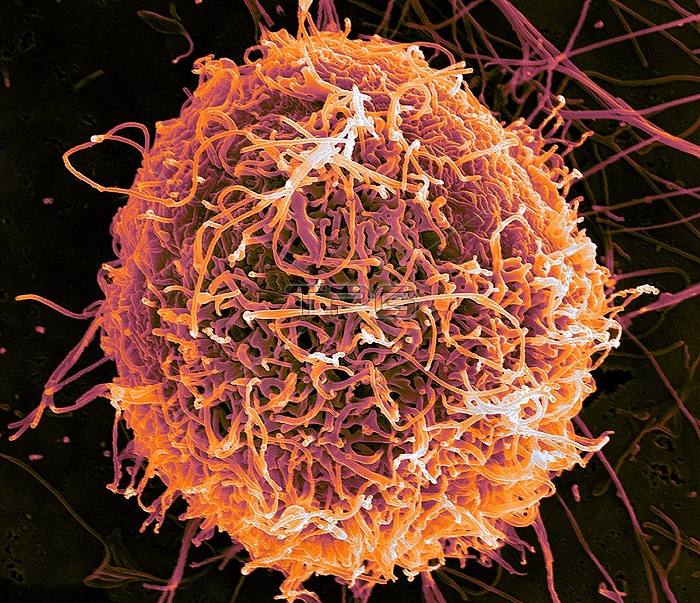
Scanning electron micrograph of filamentous Ebola virus particles budding from a single chronically-infected VERO E6 cell (25,000x magnification). Ebola hemorrhagic fever (Ebola HF) is a severe, often-fatal disease in humans and nonhuman primates (monkeys, gorillas, and chimpanzees) that has appeared sporadically since its initial recognition in 1976. The disease is caused by infection with Ebola virus, named after a river in the Democratic Republic of the Congo (formerly Zaire) in Africa, where it was first recognized. The virus is one of two members of a family of RNA viruses called the Filoviridae. There are four identified subtypes of Ebola virus. Three of the four have caused disease in humans: Ebola-Zaire, Ebola-Sudan, and Ebola-Ivory Coast. The fourth, Ebola-Reston, has caused disease in nonhuman primates, but not in humans. Vero cells are derived from the kidney of an African green monkey (Cercopithecus aethiops) in the 1960s, Vero cells are one of the most common mammalian continuous cell lines used in research. This anchorage-dependent cell line has been used extensively in virology studies.
| px | px | dpi | = | cm | x | cm | = | MB |
Details
Creative#:
TOP22237888
Source:
達志影像
Authorization Type:
RM
Release Information:
須由TPG 完整授權
Model Release:
N/A
Property Release:
No
Right to Privacy:
No
Same folder images:

 Loading
Loading